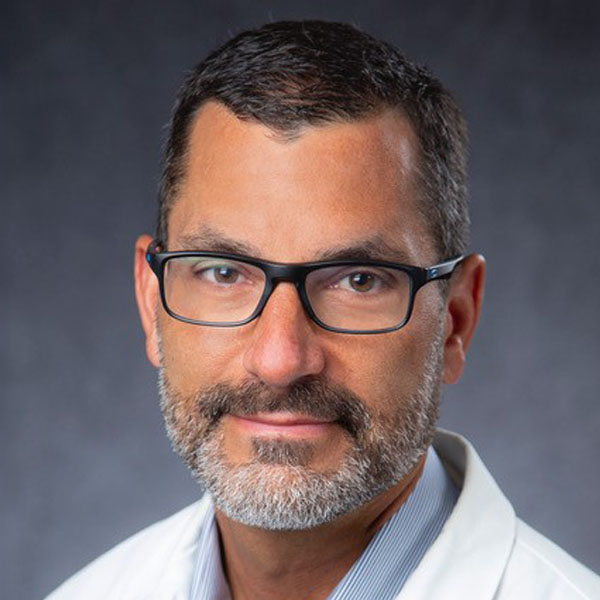AO Trauma/AO Recon Course—Comprehensive Periprosthetic Fracture Management of the Hip and Knee
Enhance Patient Outcomes in Periprosthetic Fracture with this Advanced Course for Senior Orthopedic Surgeons
Maximize patient outcomes following periprosthetic fractures with our specialized courses. Designed for senior orthopedic surgeons with over five years of experience, this program focuses on improving your ability to recognize, classify, plan, and perform internal fixation and revision procedures for total joint arthroplasty around the hip and knee prostheses.
Targeted Surgeons:
- General orthopedic surgeons
- Fracture specialists
- Arthroplasty specialists
- Surgeons experienced with both trauma and arthroplasty
The course is offered in different formats, the 2.5 day course includes practical exercises with anatomical specimens.
Why you should choose this course
Top national, regional, and international faculty
For surgeons who already treat (periprosthetic hip and knee)
Network with expert faculty and peers from all over the world
CME credits, you get a certificate of completion
Developed by renowned surgeons and delivered by the world's most important orthopedic organization
Course content
Fracture Fixation and Revision Arthroplasty Course with Dry Bone Practical Exercises, 2 days
-
Course modules
- Module 1—General principles
- Module 2—Revision arthroplasty around the hip
- Module 3—Revision arthroplasty around the knee
- Module 4—Fracture fixation with implant retention
- Module 5—Other periprosthetic fractures
- Module 6—Complications
- Module 7—Patient journey
-
Featured Lectures
- Classification—principles and application
- Imaging
- Case-based lecture—is the implant fixed well?
- Case-based lecture—indications for revision arthroplasty of the proximal femur
- Surgical approaches and implant removal for B2/3 fractures
- Principles of revision and implant selection for B2/3 fractures
- Revision arthroplasty around the hip: indications
- Principles of revision, implant removal, and implant selection
- Fracture fixation with implant retention: indications
- Fixation options and biomechanical principles
- Reduction and fixation of periprosthetic fractures around the femur
- Periprosthetic acetabular fractures
- Periprosthetic fractures around the patella and proximal tibia
- Bone loss management
- Megaprosthesis for the hip and knee—indications and limitations
- Nonunion and malunion
- Case-based lecture—open reduction internal fixation of B2/B3 fractures—a no-go or a go?
- Infected periprosthetic fractures
- Management and optimization in the preoperative phase
- Prevention of complications in the postoperative phase
-
Small Group discussions
- Is the stem stable?
- Internal fixation cases around the proximal and distal femur
- Internal fixation and revision arthroplasty around the acetabulum, patella, and tibia, including complications
-
Plenary case discussions
- Revision arthroplasty around the hip and knee, including complications
- Infected periprosthetic fractures
-
Practical exercises
Revision arthroplasty around the hip
- Simple stem revision exercise and exercise with cemented prosthesis
Fracture fixation with implant retention
- Internal fixation techniques (cables, cerclage and construct stability)
- Internal fixation techniques (locking attachment plate, periprosthetic screws and construct stability
- Interprosthetic fracture fixation
Course with Anatomical Specimens, 2.5 days
-
Course modules
- Module 1—General principles
- Module 2—Revision arthroplasty around the hip
- Module 3—Revision arthroplasty around the knee
- Module 4—Fracture fixation with implant retention
- Module 5—Other periprosthetic fractures
- Module 6—Patient journey
- Module 7—Special situations and complications
- Module 8—Anatomical specimen laboratory
-
Practical exercises
Anatomical specimen laboratory—revision arthroplasty around the hip (lateral position)
- Posterior approach to the hip
- Plate osteosynthesis of posterior column
- Extended trochanteric osteotomy (ETO)
- Implantation of a modular revision stem
- Refixation of ETO with cerclage wires
- Creation and fixation of fracture of greater trochanter
Anatomical specimen laboratory—internal fixation (supine position)
- Insertion of a distal femoral nail
- Interprosthetic fracture fixation with distal femoral condylar variable angle (VA) plate, cables, cerclages, locking attachment plate, periprosthetic screws
- Medial approach to the distal femur, double-plate osteosynthesis distal femur
Course details may be subject to change. Please check your chosen date and location for the detailed program.
Target audience
Senior, experienced (more than 5 years) consultant/practicing surgeons:
- General orthopedic surgeons
- Fracture specialists
- Arthroplasty specialists
- Surgeons experienced with both trauma and arthroplasty
Competencies
The curriculum is based upon 8 competencies:
- Recognize the challenges of periprosthetic fracture management
- Explain the indications for internal fixation and revision arthroplasty (including intraoperative fractures)
- Apply techniques of internal fixation
- Apply techniques of revision arthroplasty
- Manage the patient with a periprosthetic fracture from a medical and orthogeriatric point of view
- Prevent and treat complications
- Follow up with the patient and optimize patient satisfaction
- Analyze treatment failures and recognize possible pitfalls in treatment
What does competency-based curriculum development mean?
Resources
AO Surgery Reference
Explore the award-winning online repository for surgical knowledge, describing the complete management process from diagnosis to aftercare for fractures in a given anatomical region.
Periprosthetic fractures education taskforce
The periposthetic fractures education committee is a group of experts who build and continously improve our educational program. It consists of international program editors (IPEs) from orthopedic trauma and reconstructive surgery.

Matthew Camuso (USA)
Term: 2025–2027

Raed Al-Zaben (JO)
Term: 2024–2026

Luigi Zagra (IT)
Term: 2016–

Gijs van Hellemondt (NL)
Term: 2016–
See a full list of all regional program contributors and past international program editors.
Not the right course?
Find our list of all curricula courses here.






